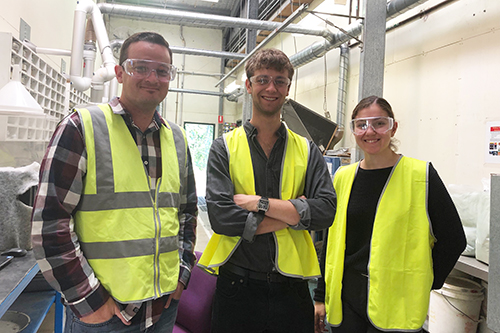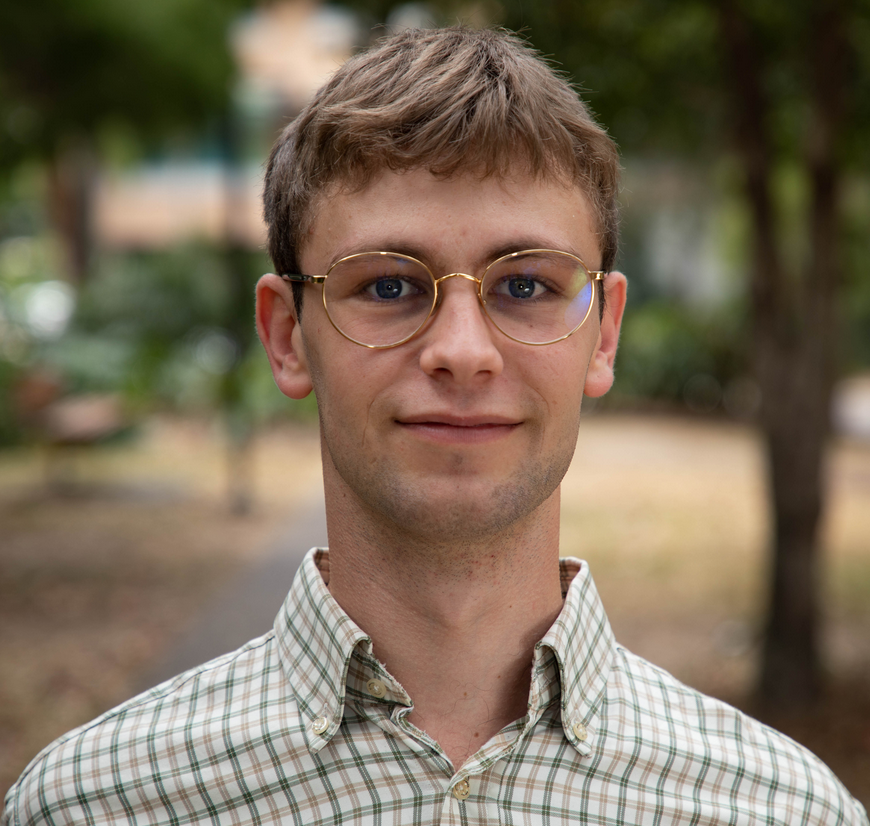
Fourth year UQ journalism student Dante Aloni is part of the production team on '360 - Minerals, materials and a sustainable future', a panel discussion program which is a collaboration between The University of Queensland and the ABC. It will be recorded at the St Lucia campus on 28 November as part of the UQ's Global Leadership Series.
He reflects on developing the program content and getting to grips with the nuances of mining for a sustainable future.
Wherever you look today, the transformations needed to turn societies into the sustainable and liveable dreams of past and future generations are taking place. In 2015, every United Nations Member State adopted 17 Sustainable Development Goals that sought balanced development between social, economic, and environmental sustainability by 2030. Now, in 2019, the role of the minerals and mining industry in making these goals a reality are taking centre stage.
Working as a researcher alongside the academics at The University of Queensland’s Sustainable Minerals Institute (SMI), and under the guidance of Professor Peter Greste and the ABC team, I have been afforded a unique vantage into the Australian mining ecosystem’s ability to meet these global ambitions.
We are a few weeks into the process of developing the 360 Panel Show as part of UQ’s Global Leadership Series, and one issue has become abundantly clear: a future built on the principles of sustainability is not possible without exceeding our current level of mineral extraction. That is not to say, however, that mining in its current form has the necessary answers to global sustainable development. Rather, what is required is a renewed emphasis on leadership, governance, and technological innovation ensuring that the minerals we need are sourced and allocated efficiently and effectively.
Enter the researchers at SMI. Having access to the expert analysis of these industry thought leaders, trained and eager to exercise their interdisciplinary learning, has been the greatest resource for the show’s construction so far. SMI’s approach to tackling the entirety of the mine life-cycle—from surveying and planning, to land rehabilitation and the social impact of mine closure on mining communities—draws on expertise from engineering, science, and the social sciences. As a result, the cross pollination of ideas between these distinct areas of research reveals a holistic approach to tackling sustainable development through minerals.
Coming to the project as a journalism student from UQ’s School of Communication and Arts, and with no real understanding of mining’s many facets, there was a steep learning curve to be navigated. Initial meetings with SMI’s Professor Daniel Franks and Professor Anna Littleboy were fundamental to understanding the pressures pushing for a sustainable minerals sector, from both within and without the industry. Through these pressures and opportunities, a narrative thread about mining’s role in our sustainable future was teased out - but don’t worry, I won’t spoil it here.
Navigating which minerals are to be mined and how they can be put to best use comes with its own set of problems. Whether it be copper wiring, lithium batteries, or metallurgical coal for wind turbines, the minerals needed for a sustainable future require an organised framework from extraction to implementation to recycling.
For example, lithium, crucial in the development of battery technology for storing energy from renewable technologies - according to research conducted at SMI, less than one percent of lithium batteries are recycled, out of a potential 95%. A complete shift towards renewables reliant on batteries would still require new mines in the short term due to the time in between a battery’s production and it’s recycling at end-of-life.
There are also a whole host of social and environmental factors to consider with a transition to renewable energy sources. The rehabilitation of abandoned mines, finding productive uses for tailings—the ore leftover after the valuable material is extracted—and preventing any ecological or social from dam collapses will remain key concerns even after a transition scenario. These problems are complex and multifaceted, with any potential solutions requiring compromises elsewhere.
360 will attempt to pull these converging currents around minerals vital role in our future to the foreground. As we interview more stakeholders and interested parties in the weeks to come, the talent and insight, we hope to deliver on stage and screen will only become more realised.
 Dante Aloni
Dante Aloni
Dante is a Journalism and Communications student at the University of Queensland with writing and editing experience, as well as comprehensive Adobe production and R data analysis and visualisation skills.
